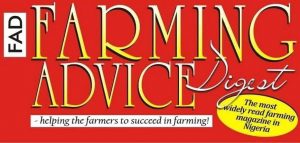Top 5 Reasons Why Inbreeding is Bad
Breeding is an important topic in livestock production and farming. Though some livestock farmers don’t value breeding, it remains the tool to improve the animals on your farm. Breeding is a very broad topic, but for this purpose of this post, everything will be made brief, but inbreeding and crossbreeding will be extensively discussed.
Read also: Energy efficiency tips for pig farmers
What is Breeding in Animal Production?
Animal Breeding is simply the application of genetic principles to enhance or improve the production efficiency in farm animals.
There are two basic systems of breeding. They include:
 Learn More
Learn MoreInbreeding
Outbreeding
What is Inbreeding?
Inbreeding is the mating of closely related animals together. It is further classified into two groups:
Close breeding
Line breeding
Close breeding is the mating of sire (father) to daughters, son to Dam (mother), or full brother to full sister. Line breeding is the mating of not too closely related animals together.
What is Outbreeding?
Outbreeding is the mating of unrelated animals together. Outbreeding is subdivided into:
Outcrossing: This is the mating of unrelated purebred animals within the same breed,
Crossbreeding: This is the mating of animals of different breeds together.
Grading-up: This is the mating of sires of a given breed to non-descript females and their offspring.
Many livestock farmers don’t know which breeding system is the best. In fact, some farmers just mate their animals, not minding the breed or family of the animals they are mating together.
Read also: chickens farmed for meat
The most common breeding systems are inbreeding and crossbreeding. I defined inbreeding earlier as the mating of closely related animals together while Crossbreeding is the mating of animals of different breeds together. If you are mating two animals of the same breed or the same family together, that is inbreeding. But did you know that inbreeding is not advisable for a commercial or profit-minded livestock farm? Yes! You may want to ask: why?
Demerits of Inbreeding
The reasons why inbreeding is bad (disadvantages of inbreeding) are as follow:
Adverse effect on the growth rate of animals: When inbreeding is continuously or intensely carried out, the growth rate and mature weight of the offspring (progeny) is negatively affected. That is, the growth rate and mature weight would moderately decrease.
Adverse effect on reproductive performance: Another danger of continuous/intense inbreeding practice is that the reproductive performance or efficiency of the progeny will reduce. For example, puberty (testicular or ovarian development) may be delayed, gametogenesis (formation of gametes) may be reduced, and embryonic death rate may increase.
Adverse effect on production: Economic traits in animals such as high litter number and size, high milk letdown or production, high carcass quality, high meat or egg production moderately decrease as you increase inbreeding.
Adverse effect on animal’s vigor: Death/mortality rates tend to increase with continuous or intense inbreeding. Inbred (product of inbreeding) are also adversely affected by the environmental condition, and their resistance to diseases becomes reduced or weakened.
Appearance of lethal or abnormalities: Inbreeding gives room for an often appearance of lethal traits or abnormalities such as cryptorchidism (absence of one or both testes firm the scrotum), parrot jaw etc.
Inbreeding is only advised if a livestock farmer:
- has deep knowledge about breeding
- wants to perform an experiment
- wants to preserve a pool of genes within a family line or breed
Knowing all these disadvantages of inbreeding, the best breeding system to practice is crossbreeding. The reasons why crossbreeding is recommended (advantages of crossbreeding) include:
- It is an effective way to introduce desirable characters that have not existed before into a breed. Also, it is used when a new breed is to be developed.
- Crossbred (product of crossbreeding) animals usually have and exhibit high vigor and rapid growth. They also perform better than their parents, such as produce more milk, eggs, wool, etc. than their parents or pedigree. In short, economic/productive traits significantly improve with crossbreeding.
Even though crossbreeding has its disadvantages which are majorly additional cost and a slight reduction in breeding merits of crossbred animals, its advantages outweigh its disadvantages.
So if you’re ready for business and you want to have quality and high performing animals on your farms, you must avoid mating animals of the same or related parents together. If possible, purchase your animals or starting stock from different sources. You must also keep breeding record of every animal on your farm.
Read also: Controlling flies on pastured Cattle
In a situation where you are confused, or you need professional guidance, don’t hesitate to look for a professional or experienced animal breeder to put you through. The most important thing is to avoid inbreeding and always practice crossbreeding as recommended by breeding experts.
Please note that crossbreeding is not the only recommended breeding system, but it is the most common and most straightforward of all. There are other modern breeding systems but just stick to one recommended in this post.
For more information and updates join our WhatsApp group HERE
Like our page on Facebook HERE











